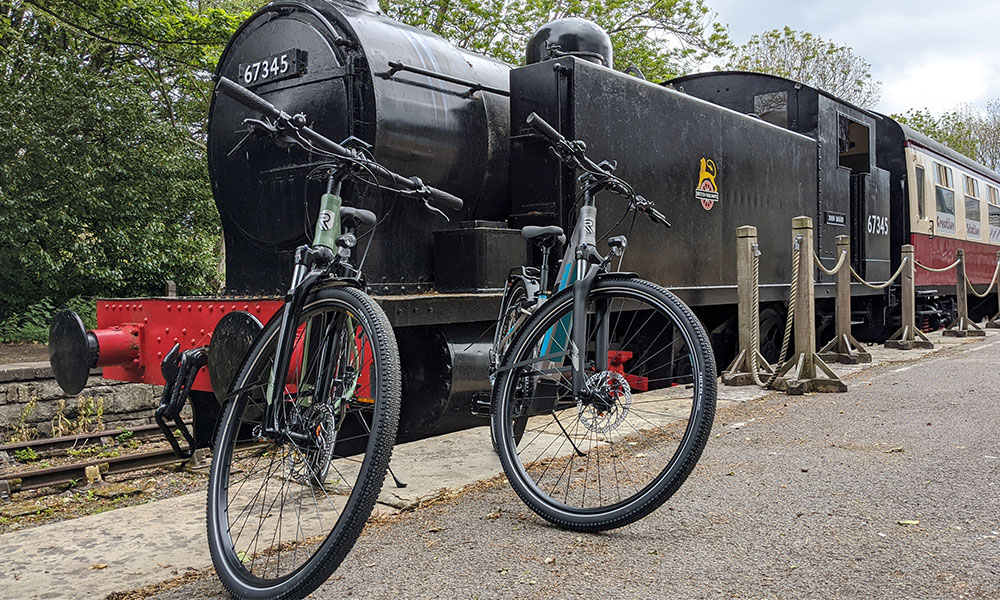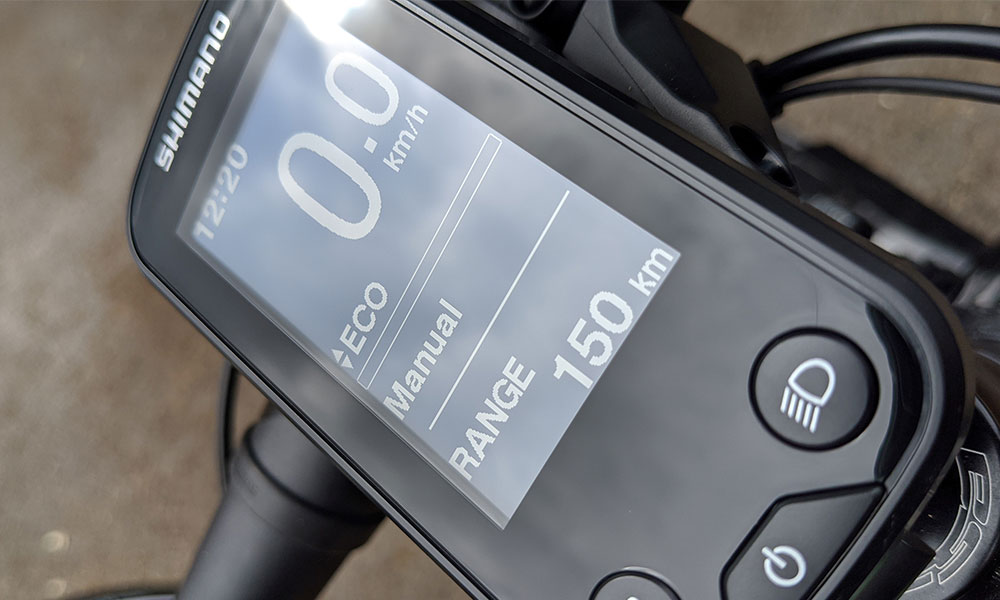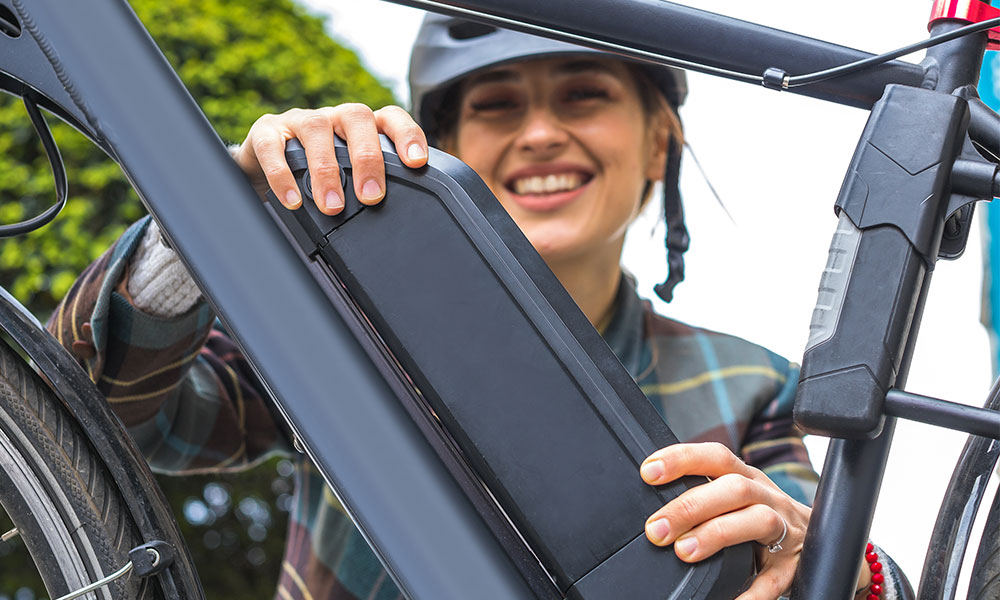A simple guide to electric bikes
OS Champion and owner of Stage 1 Cycles, Helen Pollard, tells you everything you need to know about e-bikes and how they can help you save money, become fitter, more sustainable and cover more ground.
It’s an exciting time in the world of bikes. Many people have recently made a return to the saddle or tried it for the first time and bike sales are still on the up.
In my opinion, this is fantastic for many reasons. Cycling is great for physical and mental health and your wallet. In addition, changing to active transport options will have a long-term positive environmental impact for us all, through a reduction in carbon-based emissions.
However, not everyone is an avid cyclist especially when it comes to commuting. Long journeys are time consuming, hills a bit horrible and arriving at your destination a little bit red in the cheeks is not everyone’s cup of tea.
Could an e-bike be a solution?

What is an e-bike?
So, I had a chat with Mike our Senior Bike Technician here at Stage 1 Cycles to make sure I had my facts correct.
Simply put, an e-bike is an electric pedal-assisted bicycle. It is a regular bicycle with the addition of an electric motor and battery .The electric motor is powered by the battery and provides power assistance when the cyclist is pedalling which eases the amount of effort required. The cyclist can choose how much assistance they get from the motor by selecting the power mode on an accompanying head unit. So, you don’t miss out on those fantastic endorphins as you’re still required to peddle, but an e-bike can make it a lot easier and allow you to go further and faster, especially up those dreaded hills!
Is it legal?
In the UK, an e-bike is road-legal for anyone aged 14 and over if the assisted speed is restricted to a generous 15.5mph. Modified standard bikes are illegal, often dangerous and poor value for money, so best to avoid! You do not need to pay vehicle excess duty on your bike and whilst insurance is not necessary, we do recommend you have suitable property and personal insurance for any bike.

Are there different types of e-bikes available?
There is an e-bike to match every type of bike out there, from road to mountain bike and all the way to transporting cargo bikes. Think about what you would use it for before you decide on the type of bike. Are you looking for something which allows you to speed up the forest hills so you can whizz back down? Are you wanting to hand in your bus pass and arrive at the office stress-free? Will you be transporting your kids to school on two wheels instead of four?
How much do e-bikes cost?
The cost of an e-bike depends the quality and type of e-bike you buy. We recommend investing in a good quality e-bike to ensure that the frame and parts are also of good quality. This will not only reduce your maintenance costs, but the battery is more likely to have a greater range and lifespan too.
Speak to your local independent bike retailer about your budget and what you wish to use your e-bike for and they will help you find the right model for you.

How far can I cycle before recharging?
Most e-bikes don’t charge whilst you pedal. They require charging via the mains electric through a standard 3-point pin plug.
The range of an e-bike will depend on the model and how much power assistance you require. The average range is typically between 25-100 miles. This is model/riding-style dependent, but most likely this will be enough to get you through your daily commute.
If you run out of battery the bike will still function as a regular bicycle, although it’s worth baring in mind that e-bikes tend to be heavier as they have the electric motor and battery on board.
How long does it take to recharge the battery?
This will depend on the size of the battery. It is common for e-bikes to come with a 36V battery which will take around 4 hours to charge from 0-100%. Often you can give then a quick boost over a lunch stop of half an hour.
What are the running costs of ebikes?
The running costs are very low and if you’re charging your battery from home, this will cost around 5-10p to charge your e-bike from 0-100%.
You will still require regular maintenance of your bike as you would with a conventional bicycle, but there should be very little maintenance required for the electric motor and battery. This is a lot cheaper that running a car!

We live in a rural environment and have seen a big surge in hire and sales of e-bikes. We believe they are a positive way to make cycling accessible to many more people. Consider your current barriers to cycling. Chances are, an e-bike will help you break these down.
Do hills put you off? The battery assist will make going uphill feel more like a gentle downhill, no matter how steep. The safest cycle route is too far out of your way? With an extra electrical push, you should be able to cover more ground in less time than with a conventional cycle. Too much to carry? Having some electrical power under your pedals makes transporting items on two wheels significantly easier. Wanting to spend more time on the downhill trails? An e-bike will get you to the topper in half the time.
E-bikes are an investment but a worthwhile one in our opinion, especially if they help more people get outside!
OS GetOutside Champion Helen Pollard is a keen mountain biker, dog runner and mum to daughter Daisy. She owners family-run bike shop and café, Stage 1 Cycles in Yorkshire. If you have any questions about e-bikes you can contact her at ride@stage1cycles.co.uk.





